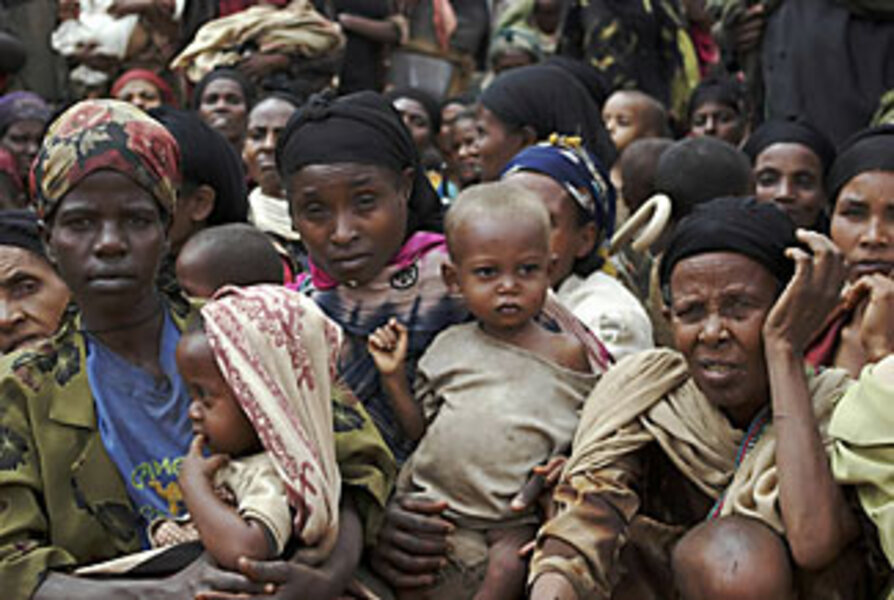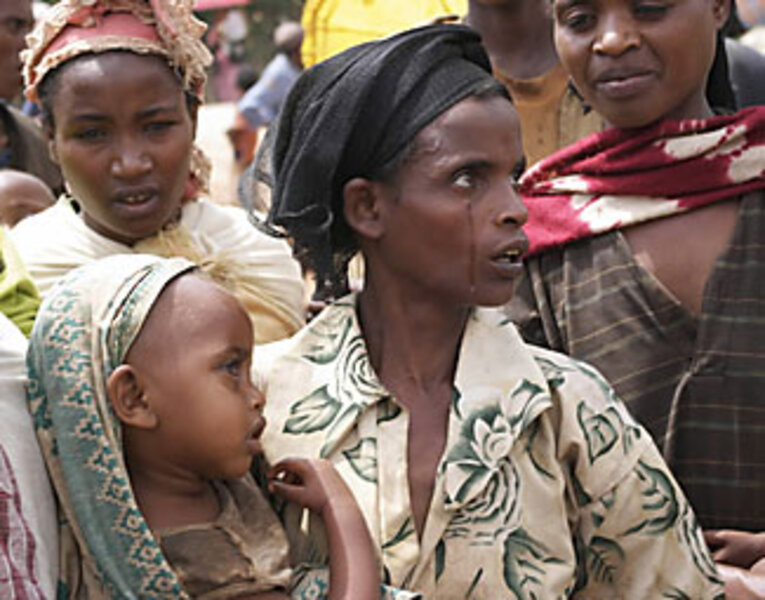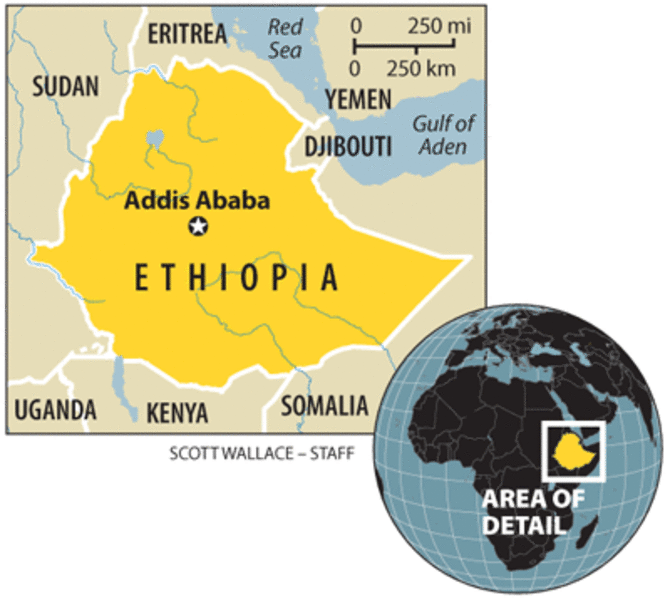As famine looms in Ethiopia, only the neediest get food aid
Loading...
| Hadero, Ethiopia
– One by one, the children are placed on a scale hanging from a makeshift wooden stand.
The mothers look pleadingly at the Doctors Without Borders aid worker, but he keeps his eyes on his clipboard, tallying the figures that determine whether each child is sick enough to eat today.
The scales in a rural clinic in Hadero, Ethiopia, are the latest indicator of the severity of the global food crisis.
There is only enough medicine and high-energy Plumpy'Nut peanut paste for the most severe cases. Outside, hundreds of hungry women and children throng the gates, desperate to go through the same brutal selection process, pushed back by guards brandishing sticks to clear a path for the next in line.
In this African nation, about 10 million people, more than 12 percent of the population, are now in need of emergency food aid after a drought wiped out harvests. But because grain is now twice as expensive as a year ago – if it is available at all – there is not enough food in Ethiopia to feed everyone in need.
Some aid workers are concerned that the combination of forces could force the country into the worst crisis since the infamous Ethiopian famine that killed an estimated 1 million people and was brought home to millions of television viewers across the world in the mid-1980s.
'Prioritizing' aid
Aid workers and government officials are thus forced to "prioritize," a harsh but necessary part of any relief effort, but rarely as grim a task as in Ethiopia at present.
"People don't know yet how widespread and severe the world hunger crisis is," says David Beckmann, president of Washington D.C.-based Bread for the World. "The gruesome things now happening in Ethiopia may be the first example of a country that's being pushed into a humanitarian crisis partly because of bad weather, but partly because of the high price of food and the high price of fuel."
The World Food Program, for example, is supposed to be doing its part by procuring emergency rations sufficient for 4.6 million Ethiopians, but because of rising expenses it only has the grain, oil, and corn-soya blend for about half that number.
Not much food left to buy
Ethiopia's foreign-funded welfare system, the Productive Safety Net Program, may get around the food shortage by simply handing out cash to some of its beneficiaries who need extra help this year due to the drought. But even with cash in hand, some worry whether there will be any food at all left to buy.
The shortfall in this so-called preventative component of the relief effort means that clinics like the one in Hadero could be thronged by even larger crowds of women and children in mortal need of intensive, and expensive, treatment.
"It is quite important to inject food rapidly into the community," says François Colas, country director in Ethiopia for the Belgian chapter of Doctors without Borders. "As long as food isn't distributed, we will see people falling into severe malnutrition."
The Ethiopian government said earlier this month that 75,000 children are already in peril from the drought.
Most are now in the country's southern lowlands, though the crisis is spreading to the northern highlands.
Drought-stricken zones have been divided into six priority levels, depending on the prevalence of malnourishment.
The largest aid efforts are now under way in areas in the top two categories.
How villages bear the hunger
Still, the crisis does not conform to administrative boundaries, and on the edges of aid operations, some villages are quietly bearing their hunger.
In the Ethiopian village of Kamecho, in one area on the cusp of a priority zone, a young boy jogs along the muddy path, dutifully pointing out the households with malnourished children.
Word spreads that a foreigner has arrived at this remote spot, accessible only by a footbridge.
Parents emerge from huts and fields carrying listless children appear from their huts and fields carrying listless children. One woman marches to the center of the gathering crowd with a bundle in her arms.
She throws the threadbare blanket to the ground and holds up her frightened daughter, the child's lip quivering as her eyes dart from face to face, her bony legs swinging limply below her swollen belly.
She had brought her daughter to a nearby clinic for help, but when the staff discovered that the child was not only malnourished but afflicted with tuberculosis, they referred the child to a hospital 34 miles away in Hosaina.
One staff member, speaking anonymously, says that every week the clinic refers as many as six cases of malnourished children with complications, knowing that most will never make it.
"We refer the kids to the hospital in the hope that they will of course go and be healed, but that is usually not the case, and it is horrible," he says.
Neighbors tell a similar story in Kamecho.
Unable to afford transportation to the hospital, they returned to plow their fields in hope that their children will survive another two months until the next harvest.
The Irish organization Concern says that help may come sooner if it secures the resources to set up operations in the area.
All together, aid operations in Ethiopia will need at least another $300 million this year to fill the shortfall.
The US, Britain, and other countries are likely to step up, but even if these donors provide more funds tomorrow, it will take as long as eight weeks to procure food internationally.
And once reaches the country, truckers are in short supply to distribute the aid, sometimes canceling delivery contracts at the last minute as more lucrative opportunities arise.
Until more aid arrives, government agencies and international organizations are likely to continue to concentrate their resources in the neediest areas – weighing the indicators by the much more convenient statistical scale.







